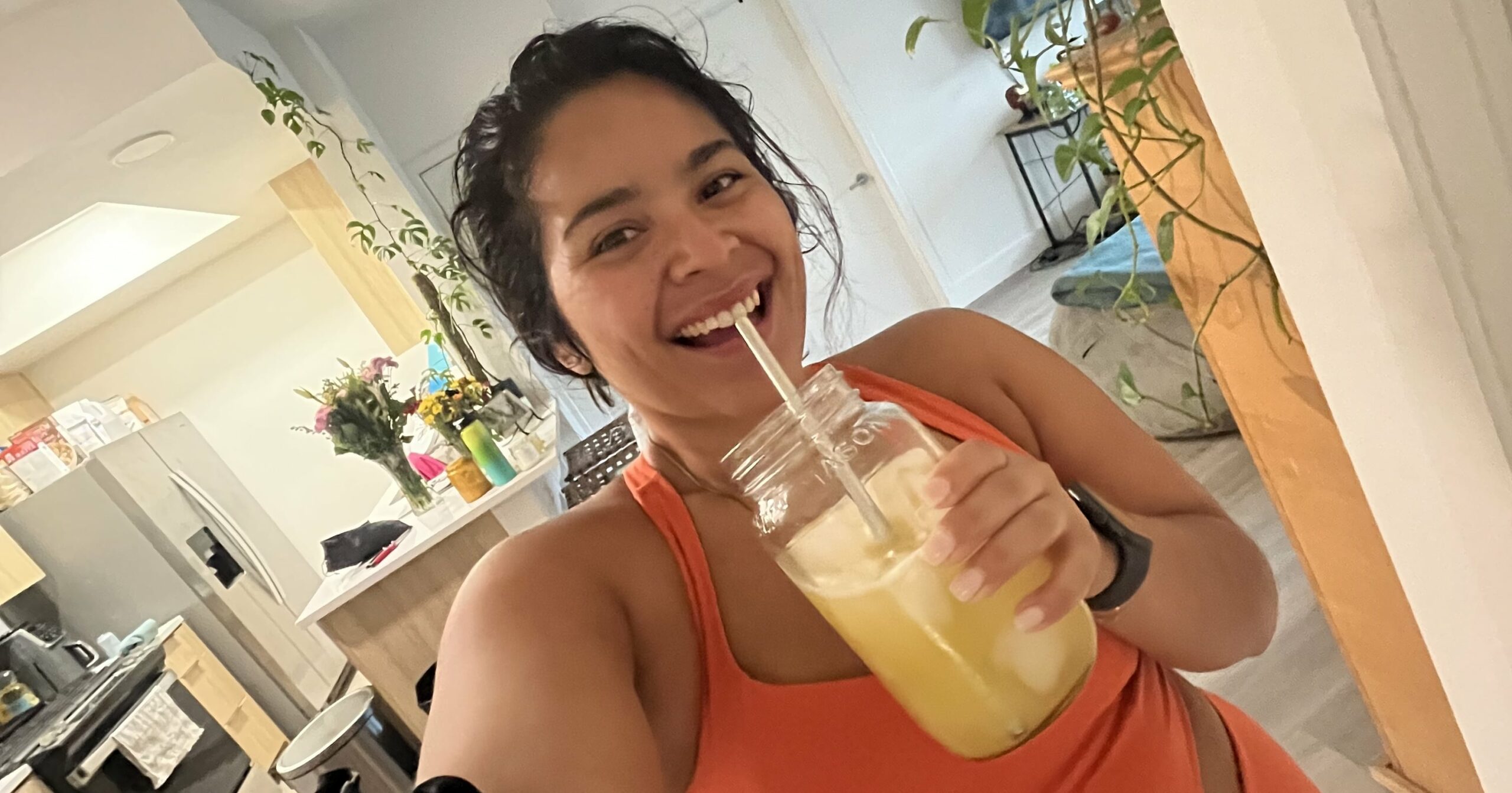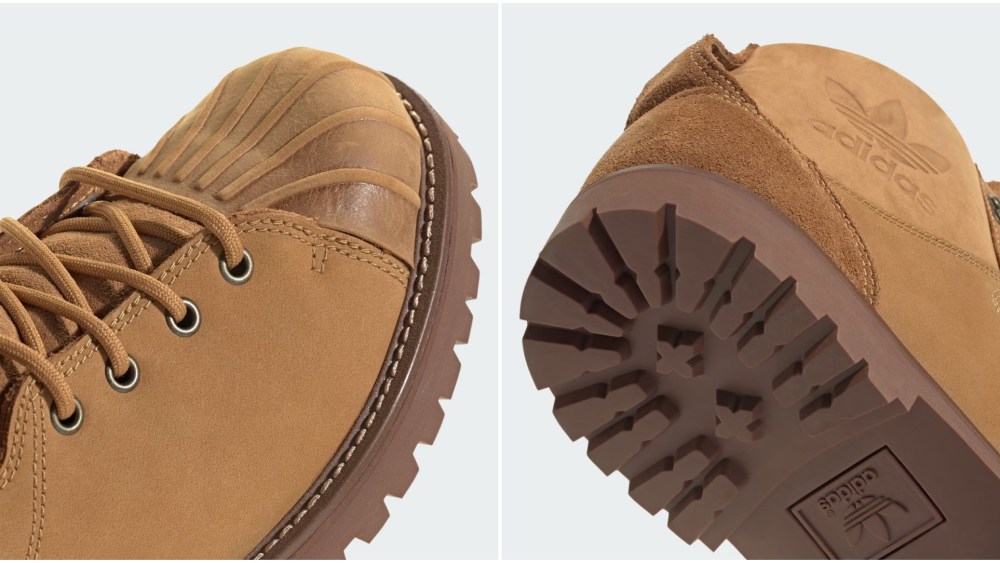In 2022 I met with a nutritionist to see why drinking coffee after 11 a.m. kept me up all night. Turns out, I’m what you’d call a “slow caffeine metabolizer,” meaning that a little goes a long way for me. Since then, I’ve been on the hunt for coffee alternatives that will put just as much pep in my step. I wanted to reduce my caffeine intake and find something that didn’t make me jittery or leave me wide awake all night. Somewhere along the line, I had the idea to swap out my morning cup of joe for a can of prebiotic soda every single day for a month. One such brand, Olipop, generously agreed to send me some samples, and after sticking to the experiment, I can happily report that I’ve found my new favorite morning beverage.
Even better: my new protocol is nutritionist-approved. Before starting my investigation, I chatted with Stephanie Crabtree, RD, owner of Holistic Health in Venice, Florida, who hypothesized that I would see improved digestion and curbed hunger. (Check.) When I talked to Dalina Soto, RD, LDN, an anti-diet dietitian based in Philadelphia, she had similar thoughts. “The added fiber in your Olipop, combined with breakfast, will likely give your gut a little more nutrition. This could make you have a good poop, which might even make you happier,” says Soto. (Also check.)
Keep reading for more of these professional insights about Olipop, exactly what happened when I had a prebiotic soda with breakfast for 30 days straight, and what to know before trying this for yourself.
Experts Featured in This Article
Stephanie Crabtree, RD, is the owner of Holistic Health in Venice, Florida.
Dalina Soto, RD, LDN, is an anti-diet dietitian based in Philadelphia.
What Is Olipop?
Olipop is a prebiotic sparkling drink marketed as a healthier alternative to soda. Though there are a couple of options that contain 50 mg of caffeine per 12-ounce can (this compared to 95 mg in an eight-ounce cup of coffee), like Ridge Rush and some cola flavors, Olipops are not typically caffeinated.
“Olipop has prebiotics – fruit and veggie fiber – and also less added sugar,” Soto explains. The idea is that by adding nine grams of fiber and lowering the sugar content, it’s ‘healthier’ than traditional sodas, she says. Crabtree notes that it’s worth delineating the difference between prebiotics and probiotics here. “Prebiotics are nutrients that you take and go to your gastrointestinal tract to feed the good bacteria that lives there,” says Crabtree. “Prebiotics themselves aren’t bacteria – that would be probiotics, which you find in yogurts, kefirs, kombucha, and fermented foods.”
While I stuck with Olipop for consistency’s sake, there are other prebiotic sodas on the market, including Culture Pop and Poppi (which has recently garnered some controversy, after a class-action consumer-fraud lawsuit alleged that it didn’t contain enough fiber to deliver “meaningful gut health benefits”)
What Happened When I Drank Olipop with Breakfast for a Month
I became a happier morning person.
I expected to see more physical changes during the first week of my experiment than I actually did. I thought I’d immediately be more energetic and have better bowel movements – that wasn’t the case. This could be because our bodies take a while to get used to increased fiber intake, says Crabtree. What I did notice, however, was that having soda for breakfast made me happier. I grew up with the mindset that soda was bad for me, but consuming a tasty, fiber-rich, low-sugar soda felt like a fun sweet treat instead of an unhealthy indulgence.
When I drank coffee in the mornings, I didn’t feel energized or happy. I just felt like I had to run to the toilet after the first sip. It was a great laxative, yes, but it left me jittery rather than focused. When I drank Olipop, on the other hand, I felt more awake and productive, especially when I tried the caffeinated flavors or even the caffeine-free Crisp Apple variety, my personal favorite.
By week two of this trial, I started noticing a few other improvements…
My digestion got much more regular.
I wouldn’t say that I had digestion issues before this experiment. I will admit, though – at the risk of veering into TMI territory – that I wasn’t exactly “regular.” I pooped maybe once a day and there were some days when I didn’t go at all. The first week of my prebiotic soda trial, this still held true. But by the second, third, and fourth weeks, I was a consistent, twice-a-day pooper. Olipop contains soluble fiber, says Crabtree, which dissolves in water and feeds the good gut bacteria. This can soften your stool and make it easier to come out. (And as Soto had predicted, a happy gut definitely made for a happy girl.)
To be sure that the prebiotic soda was the reason for my new and improved GI situation, I took specific care not to change my diet during this trial period. Read: drinking Olipop was the one major change to my eating and drinking habits, so I feel confident that it’s what led to my increased regularity.
I ate more but snacked less.
I often get so busy that I forget to eat three square meals and end up indulging in snacks by the end of the night. But this changed after week two of my experiment. Since I was having breakfast along with the fiber-rich soda, I got used to eating in the morning and didn’t even think about snacking until I was hungry enough for a proper lunch. I’d keep busy until dinner, when I ate a hearty meal, which, in turn, cut down on nighttime snacking.
“Fiber is known to keep us feeling full longer and it also helps balance our blood sugars,” says Crabtree. Balanced blood sugar leads to fewer cravings. So by getting that fiber first thing in the morning, you’re setting yourself up for success for the whole day, she points out.
My skin was healthy and dewy.
When I shared this tidbit with Crabtree, she wasn’t the least bit surprised. “Just like there’s a gut-brain connection, there’s a gut-skin connection,” says Crabtree. “Since you’re waking up and not dehydrating yourself with caffeine, and hydration is so important for the skin, that’s going to be a benefit.” A noteworthy caveat: I’ve never had sensitive or acne-prone skin. My face is a bit oily in the T-zone and I typically struggle with hormonal breakouts (around my period) on my chin and the sides of my face.
During the last half of my trial run, I noticed my skin was less oily and that I didn’t have any pimples pop up on the sides of my face during my respective menstrual cycle. I kept my beauty regimen the same – toner, eye cream, moisturizer, and SPF – so while I can’t say for certain that drinking prebiotic soda made my complexion look better, I feel like it did.
What to Know Before Drinking Prebiotic Soda For Breakfast
You shouldn’t drink it on an empty stomach.
The important thing to note here is that you should drink a soda like Olipop with breakfast, not for breakfast. Since the drink already has carbs in the form of fiber, Crabtree strongly suggests pairing it with protein and fats for a well-balanced meal and to avoid a blood sugar spike. Even though it only contains two to five grams of sugar, it’s still not a good move to eat or drink anything with sugar on its own, she advises. Combine it with a protein bar, a handful of nuts, or an egg or two to make it into more of a complete meal and really set yourself up for success, she adds. During my experiment, I’d often eat a protein-rich yogurt topped with granola and nuts or avocado toast with an egg.
If you have GI issues, check with a doctor before drinking prebiotic soda regularly.
More fiber is typically good, but there are also a lot of other factors we would have to look at before adding it to someone’s diet, notes Soto. For instance, if you have gastrointestinal issues like IBS or acid reflux Soto suggests speaking with your care team to ensure that the fiber in prebiotic sodas won’t trigger irritation or exacerbate current issues.
Drinking prebiotic soda isn’t a substitute for eating additional fiber.
Soto, who made an Instagram video comparing Olipop and Poppi, also cautions against treating a soda like Olipop as the be-all and end-all when it comes to fiber consumption. “We still have to eat fiber-rich foods,” she says in the video. That’s because Olipop only contains nine grams of fiber, and the average daily fiber recommendation for adults is 25-30 grams. (Fiber-rich foods include avocado, black beans, broccoli, chia seeds, chickpeas, oats, and quinoa.) Point being, you can’t just add a can of Olipop to your diet and call it a day. And remember, fiber is imperative for more than just GI health. “Fiber can help with reducing risk of colon cancer and regulating your heart health by getting your cholesterol in a good range,” says Crabtree.
Final Thoughts
Considering that Olipop costs about as much as a coffee shop drink (you can get an
Natalie Arroyo Camacho is a San Fernando Valley-based journalist with more than five years of experience in the well-being and lifestyle space. A proud child of immigrants and first-generation Mexican American, Natalie has landed her byline in the Los Angeles Times, GQ, Teen Vogue, Remezcla, PS, and many others.



